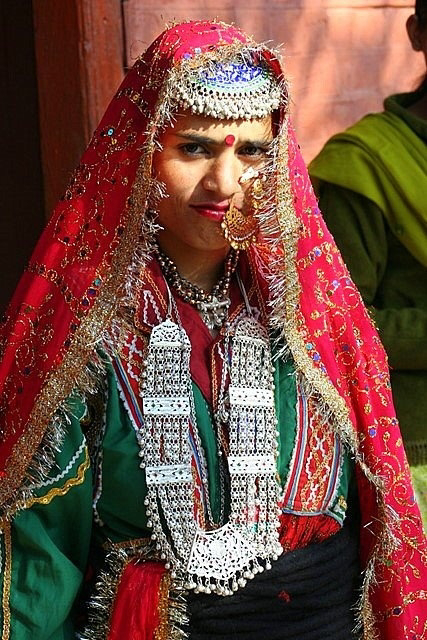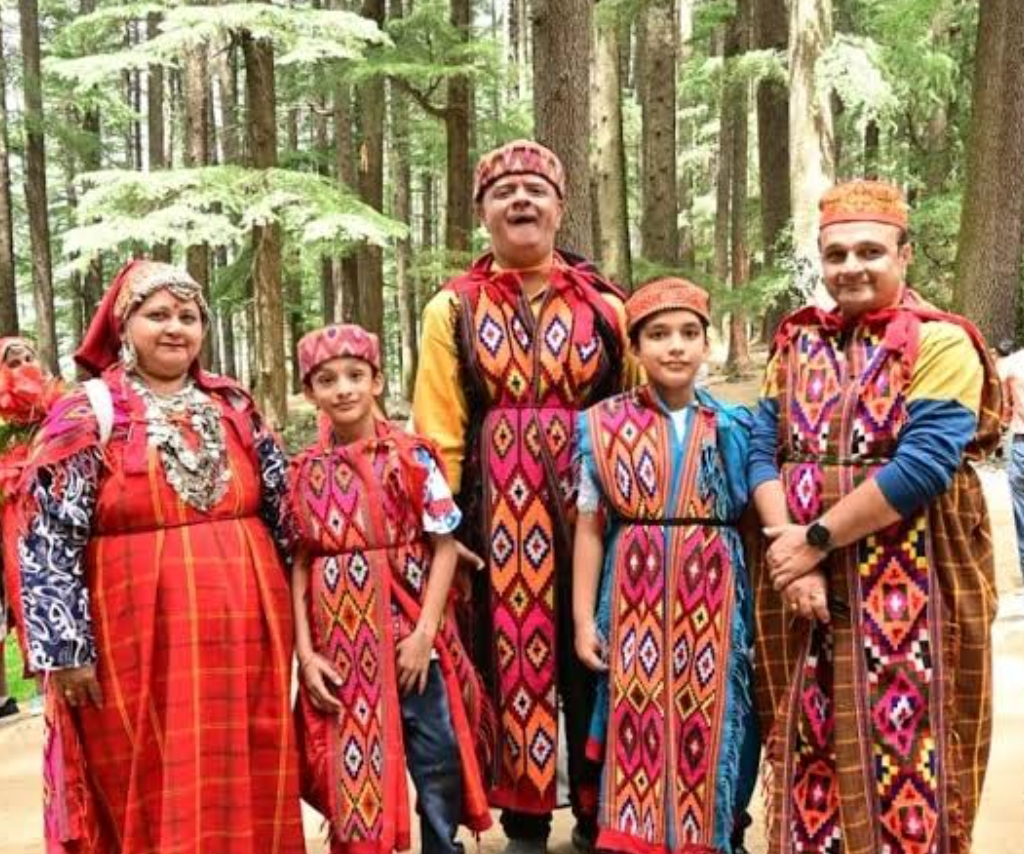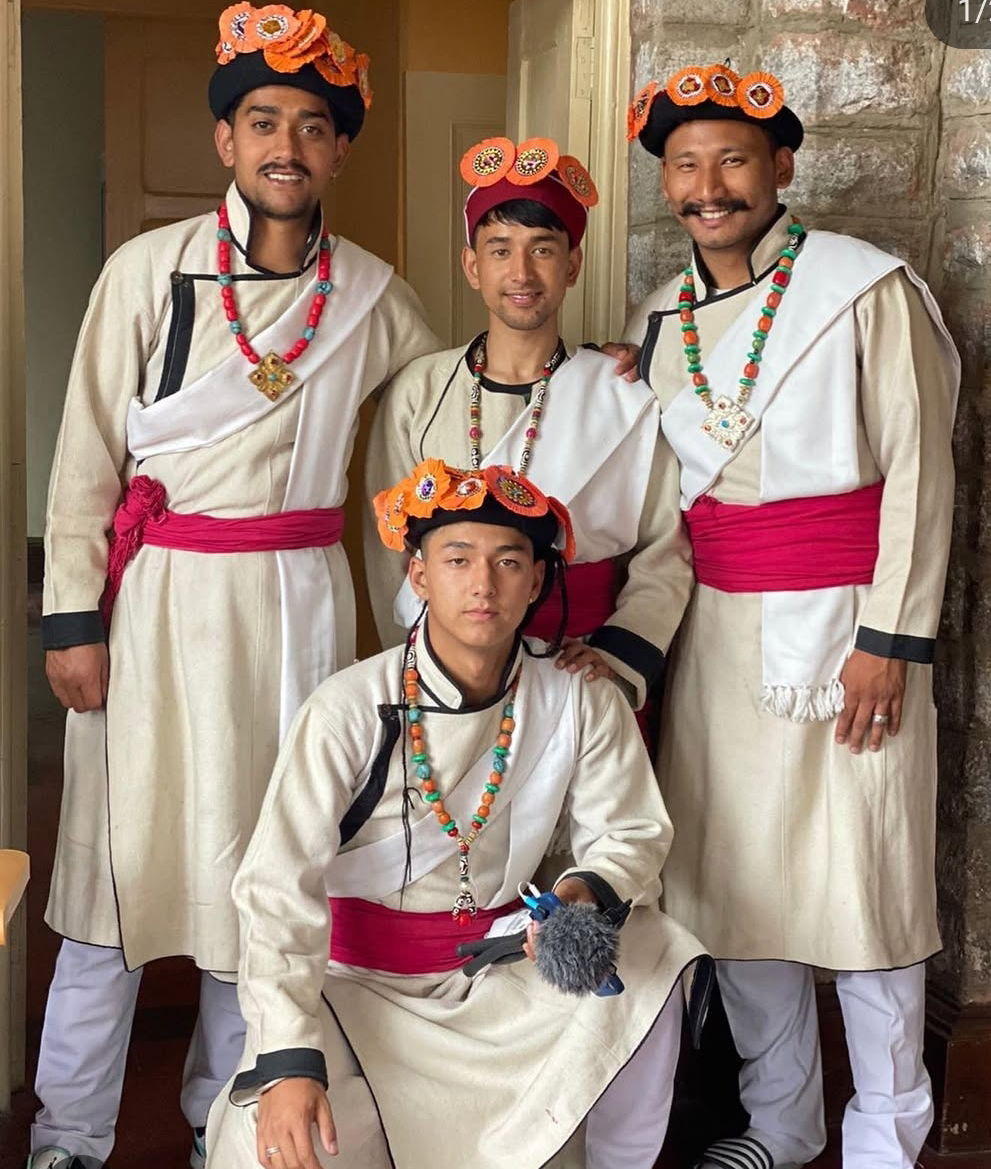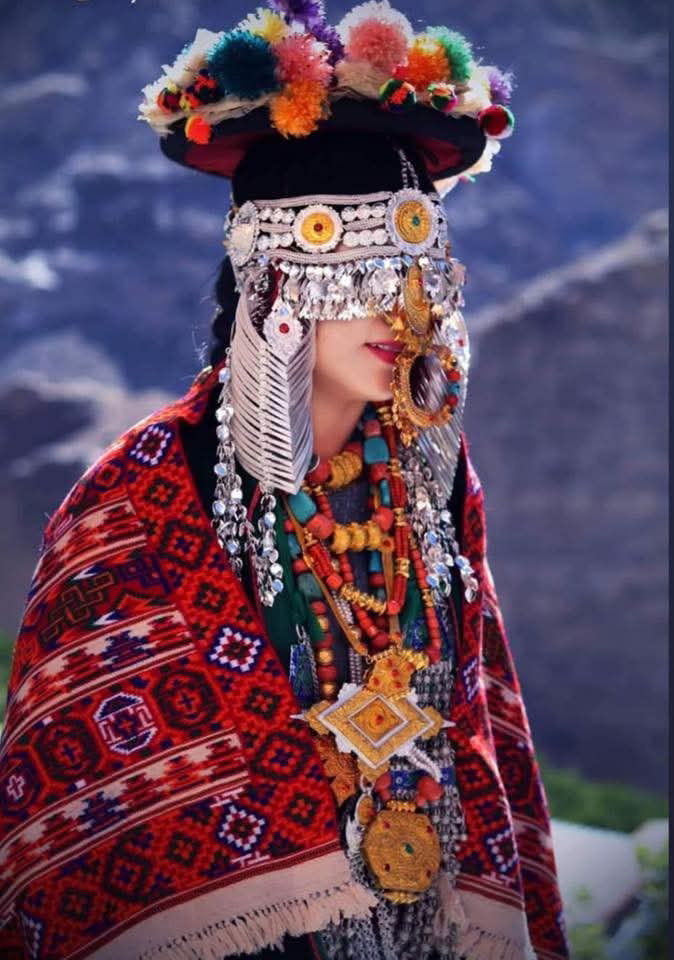Traditional Dresses of Himachal Pradesh: A Cultural Legacy
Himachal Pradesh, nestled in the lap of the Himalayas, is known for its breathtaking landscapes and rich cultural heritage. One of the most visible aspects of this heritage is its traditional attire, which varies across regions due to differences in climate, geography, and ethnic diversity.
This article highlights the Top 10 Traditional Dresses of Himachal Pradesh, focusing on their craftsmanship, cultural significance, and regional uniqueness.
Here is the corrected and refined list of 10 traditional Himachali dresses:
-
Chaugoshi (Chamba) – Traditional embroidered outfit for women.
-
The Rejta (also spelled Reshta) (Lahaul-Spiti) – Layered woolen dress for women.
-
Kulluvi Pattu (Kullu) – Long woolen kurta shawl like drape
-
Chola (Chamba, Kangra) – Traditional tunic worn by men.
-
Suthan (All Himachal – Kangra, Mandi, Kullu) – Pahari-style salwar for both men and women
-
Himachali Topi – Traditional caps for men.
-
Ghagri and Chaddar (Kangra, Mandi) – Women’s outfit with a long skirt and draped shawl.
Dhatu – It is a headscarf or turban worn by women, primarily in the upper Himachal regions like Kinnaur and Kullu. The dhatu is usually made of wool and is often colorful with intricate designs.
1. Importance of Traditional Clothing in Himachal Pradesh
-
Traditional attire reflects the cultural heritage and distinct ethnic identities of the people.
-
Designs, fabrics, and embroidery often symbolize social status, religion, or community identity.
-
Woolen garments like Pattu and Chola are essential for protection in the cold climate.
-
These attires play a significant role in festivals, ceremonies, and religious rituals.
-
Preserving traditional clothing supports local artisans and the handloom industry, contributing to the region’s economy.
2. Materials Used in Himachali Traditional Attire
-
Wool – Most commonly used fabric in colder regions like Kullu, Kinnaur, and Lahaul for garments like Pattu, Chola, and Dorukha shawls.
-
Cotton – Used for summer clothing such as Churidar Pajamas and Choli-Ghagra.
-
Silk – Reserved for special occasions, seen in outfits like the Chamba Chaugoshi, known for its fine embroidery.
-
Locally sourced natural materials ensure durability while maintaining cultural authenticity.
3. Influence of Festivals and Ceremonies on Traditional Attire
-
Kullu Dussehra – People wear vibrant handwoven Pattu shawls, embroidered Kurtas, and Ghagras.
-
Phulaich Festival – Celebrated in Kinnaur, showcases intricate woolen garments and floral headgear.
-
Weddings & Religious Ceremonies – Special garments made of silk and pashmina with elaborate embroidery.
-
These occasions keep traditions alive and reinforce cultural pride.
4. Impact of Modern Trends on Himachali Traditional Clothing
-
Urban areas see a shift towards lighter fabrics like cotton and synthetic blends for comfort.
-
Traditional attire is now adapted with modern designs, such as simpler versions of Ghagra-Choli and Churidar Pajama.
-
Despite modernization, woolen garments like Kulluvi Kurtas and Pattu shawls remain popular in rural regions and festivals.
-
A balance between tradition and practicality helps preserve Himachali cultural identity.
5. Role of Local Artisans in Preserving Traditional Dress
-
Local artisans handcraft woolen garments such as Pattu shawls and Kinnauri Cholas, using age-old techniques.
-
Weaving and embroidery often feature nature-inspired designs, unique to Himachali culture.
-
Government and private initiatives promote traditional handloom through festivals and exhibitions.
-
Supporting local artisans sustains livelihoods and preserves the region’s textile heritage.
6. Regional Variations in Himachali Traditional Attire
Himachal Pradesh’s diverse geography influences the dressing styles across different districts:
-
Lahaul & Spiti – Heavy woolen Chola and Ghagri-Chaddar provide insulation against extreme cold.
-
Kinnaur – Known for intricately embroidered Pattu shawls and Kinnauri topis.
-
Chamba – Famous for Chamba Chaugoshi, a colorful embroidered dress.
-
Kullu – Features bright handwoven woolen shawls and Kulluvi Kurtas.


















No comments:
Post a Comment